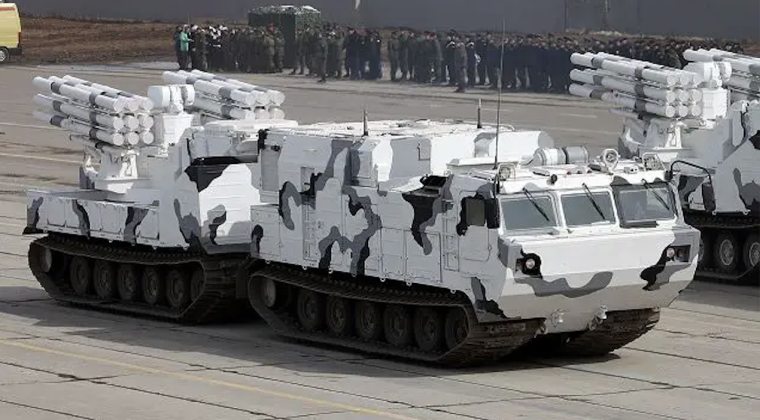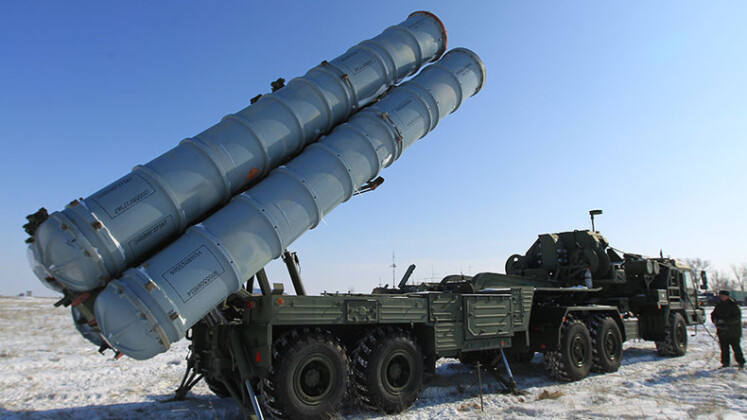News
U.S. Stakes Massive New Claim to Arctic Resources: This is How Russian Air Power Has Prepared to Contest It – Part One

On December 19 the United States government officially published maps revealing expanded territorial claims to a very large continental shelf in the Arctic Sea, the Atlantic, the Bering Sea, the Pacific Ocean, in addition to two sections in the Gulf of Mexico, and near the Mariana Islands, which represented a unilateral claim of sovereignty over approximately 1 million square kilometres of seabed. The most significant implications of this territorial claim were in the highly disputed and increasingly strategically important Arctic, where Washington’s claims would put it in control of tremendous quantities of minerals and energy resources. Staking a claim to the Arctic though its northernmost state of Alaska, the U.S. has been expanding its military activities in the region for close to a decade, with the accession of Finland and expected accession of Sweden to NATO ensuring that all Arctic states other than Russia are part of the American-led alliance. One of the most conspicuous signs of the prioritisation being afforded the region has been the deployment of over 100 fifth generation F-22 and F-35 fighters to Alaska – which represents by far the largest concentration of these still relatively scarce combat aircraft in any one state or region. With tensions between the U.S. and Russia over the Arctic already remaining high, Moscow condemned Washington’s new unilateral claims as “unacceptable,” with the head of the State Duma Committee on the Arctic, Nikolay Kharitonov, warning that U.S. attempts to expand the region under its control risked increasing regional tensions.
The expansion of American territorial claims closely follows a statement by commander of the Russian Navy Admiral Nikolay Yevmenov in the first week of December that the country faced a considerable threat from the growing NATO military presence in the region, stressing that “the collective West is ramping up efforts to impede Russia’s economic activities in the Arctic.” Russia relies on the Arctic for approximately one fifth of its Gross Domestic Product, and has invested heavily in securing its expanding North Sea Route which has the potential to serve as a new centre of maritime trade between East Asia and Europe. It has received considerable Chinese support in doing so, with Chinese firms playing important roles in improving regional infrastructure, as Beijing itself retains a strong interest in the North Sea route as a safer passageway for its trade than the Malacca Strait and Indian Ocean dominated by Western navies. In parallel to major investments in regional infrastructure, mining, oil exploration, and the construction of by far the world’s largest fleet of nuclear icebreakers, Russia from the 2010s also significantly enhanced its armed forces’ ability to conduct operations in the region.

While the Arctic held significance during the Cold War as the shortest transit route between the USSR and the United States for nuclear armed strategic bombers and ballistic missiles, the region’s importance is arguably much greater today. Due to limited numbers of tactical combat jets available within the Russian fleet, a large part of the responsibility for air defence in the Arctic has fallen to ground based assets. Highly specialist variants of the Tor and Pantsir short ranged air defence systems have accordingly been developed specifically for regional operations to support longer ranged S-400 systems deployed at key forward locations such as the Novaya Zemlya archipelago and the Yakutian port of Tiksi. Russian forces also test fired the S-500 system in the region in December 2021, with the Arctic expected to be one of the regions first prioritised for deployment of the new assets which boast a wholly unrivalled 600km engagements range and the ability to engage high value support aircraft such as bombers and AEW&C platforms as well as space targets such as satellites.

The bulk of the Russian combat aviation presence in the Arctic is comprised of MiG-31BM interceptors, with the Navy’s Northern and Pacific fleets and the Air Force’s Central Military Command all fielding units which hold some responsibility for Arctic security. The MIG-31 was developed specifically for operations in the region, and is capable of deploying from makeshift ice airfields accordingly with avionics well suited to extended operations in remote areas far from ground control and with limited support from ground based radars. In line with a renewed focus on enhancing Arctic security in the 2010s, the Northern Fleet and units under the Air Force’s Central Command replaced their Soviet era MiG-31s using 1980s avionics with heavily modernised MiG-31BM interceptors, with the Pacific following suit from 2019. The upgrade not only extended the service lives of the airframes, which are some of the oldest in Russian service, but also completely replaced avionics, most notably with the integration the new Zaslon-M fire control system with an 8BM radar. The 8BM is considered among the most powerful radars integrated onto any tactical combat aircraft in the world, and is by far the largest at approximately three times the size of the F-22’s APG-77 – or 11 times the size of the F-16’s APG-66, with Foxhounds designed to carry outstanding large and powerful sensors due to both the vastness of the far northern territory they needed to cover on patrol as well as their requirement to be able to shoot down low radar cross section enemy missiles at long ranges.
Continued in Part Two












